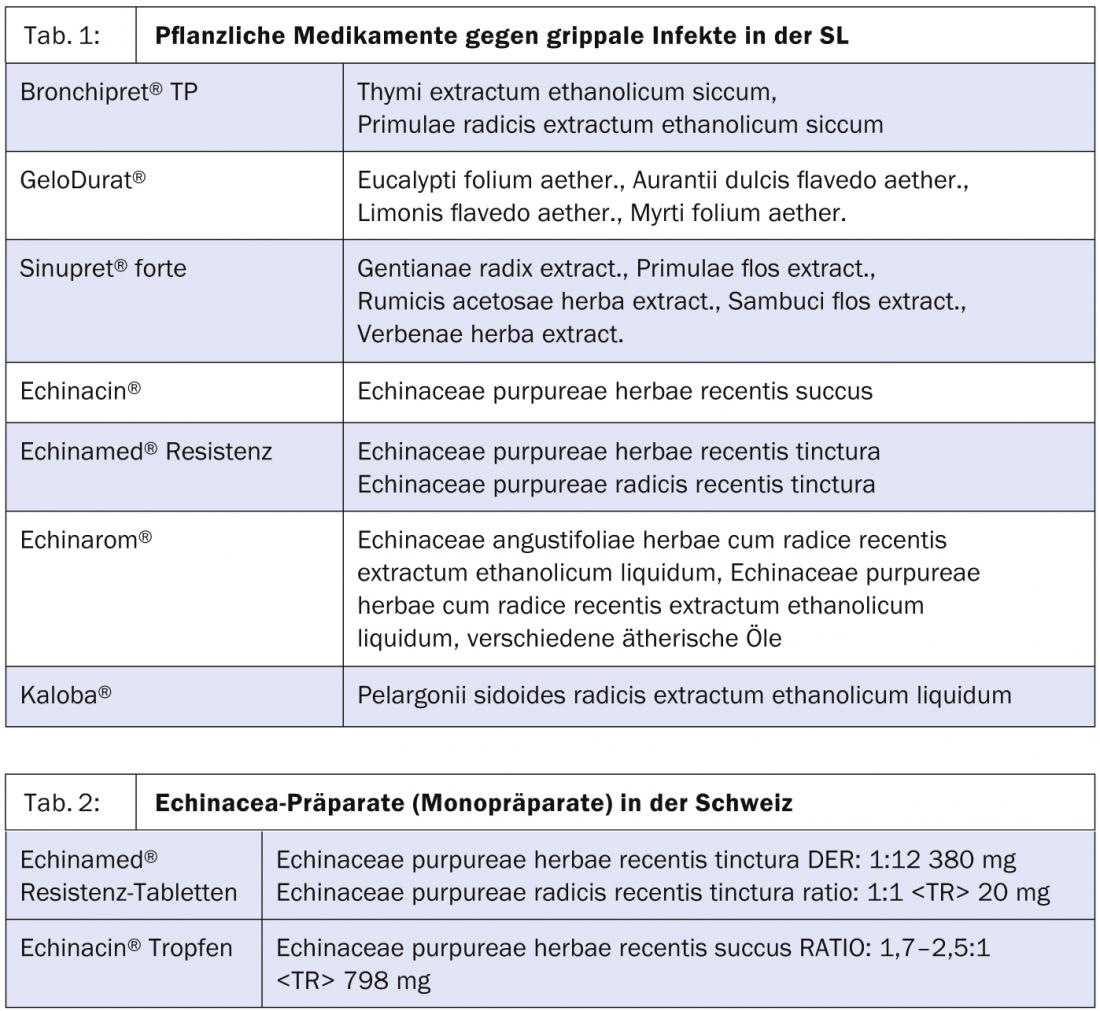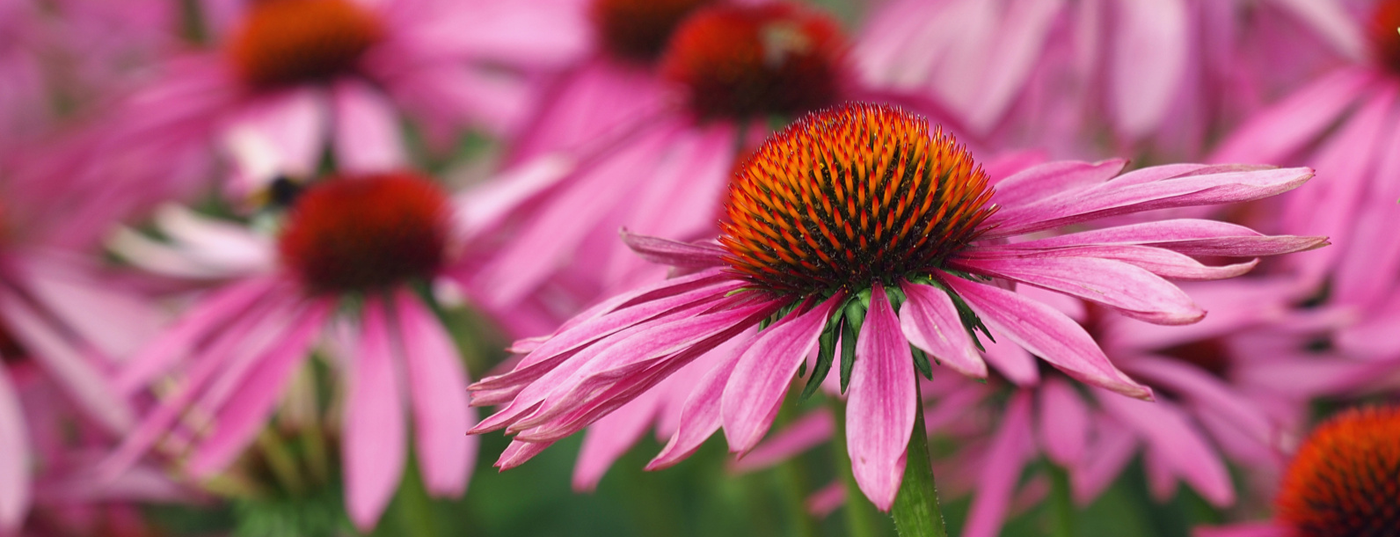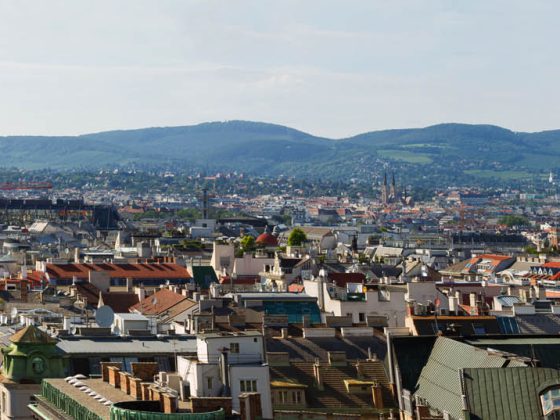There are effective medicinal plants for flu-like infections with the familiar symptoms of fever, runny nose, cough and feeling bruised. The best researched is an extract from Echinacea purpurea, the coneflower, whose prophylactic and therapeutic efficacy has been proven several times.
Surely even our ancestors occasionally sat coughing and with a dripping nose in front of the cave, freezing, waiting for the end of the flu that affected them. Over time, people learned to treat fever, aching limbs, colds and coughs with appropriate medicinal herbs.
Today there are countless tea mixtures, rubs, inhalation mixtures and cold baths based on herbs. Primarily, medicinal plants are used that contain essential oils (essences) that can be used to treat the symptoms of influenza. Such mixtures consist either of the whole plants or extracts of peppermint, elderberry, thyme, primrose, ivy, ribwort, lime, eucalyptus, verbena, dock and many other medicinal plants whose efficacy has been proven by conventional medicine.In Switzerland, there are several specialties with different compositions against flu infections and bronchitis, which have been included in the list of specialties (SL), i.e. are reimbursed by basic health insurance (Tab. 1), as their efficacy has been documented on the basis of clinical studies [1–4]. There are also medical reports of use that support the efficacy of these preparations [5].
Echinacea
A special role in this group of medicinal plants is occupied by echinacea, of which several species are used. Originally native to North America, this medicinal plant was already used by the indigenous peoples living there to treat various ailments.
Meanwhile, echinacea has proven to be a “parade plant” for the prevention and treatment of viral-related flu-like infections. There are a large number of clinical studies demonstrating its efficacy [6–8].
Most often, extracts of Echinacea purpurea are used. However, there are also preparations from other Echinacea species, such as E. angustifolia or E. pallida. In the case of Echinacea purpurea, on the one hand, either extracts from the herb, the root or a pressed juice from the aerial parts of the plant are used (Table 2).

Effectiveness
Echinacea extract, which is obtained from the herb and root, has been particularly intensively researched. It acts by uptake of echinacea alkamides into the blood and binding to cannabinoid receptors [9]. It can thus inactivate various viruses as well as certain respiratory bacteria and inhibit the respiratory response induced by them [13]. Numerous studies have demonstrated its effectiveness in preventing induced rhinovirus colds. A meta-analysis [6] documented the results, which also included negative studies with methodological flaws refuted. The therapeutic efficacy of the extract has also been proven several times [eine Auswahl in 10–13].
Pelargonium sidoides
In recent years, an extract from the medicinal plant Pelargonium sidoides, which is native to South Africa, has also been used more and more frequently and is approved in our country for acute bronchitis. The evidence of Pelargonium sidoides extract EPs® 7630 has been repeatedly documented [14,15]. It has an antiviral -bacterial effect by inhibiting bacterial adhesion to respiratory mucosal cells and increasing phagocytosis. The preparation is also effective in children and adolescents [16].
Literature:
- Kemmerich B: Drug Research 2007(9); 57: 607-615.
- Rossi A, et al: Fitoterapia 2012(4); 83: 715-720.
- Hudson J, Towers GHN: J Med Plant R 2009(13); 3: 295-320.
- Kamin W, et al: Acta Paediatrica 2009. DOI:10.1111/j.1651-2227.2009.01656.x.
- Frey P: Phytotherapy 2006(5); 6: 2-4.
- Schoop R, et al: Clin Ther 2006(2); 28: 174-182.
- Shamra M, al: Phytother Res 2008, DOI:10.1002/ptr.2714.
- Pleschka S, et al: Virology Journal 2009; 6: 197-206.
- Wölkart K, Bauer R: Phytotherapy 2006(1); 6: 15-18.
- Barrett B: Phytomedicine 2003; 10: 66-86.
- Barnes J, et al: J Pharm Pharmacol 2005; 57: 929-954.
- Caruso TJ, Gwaltney JM Jr: Clin Infec Dis 2005; 49: 807-810.
- Schapowal A: Ars Medici Phytotherapy 2010(4/5); 10: 10-13.
- Matthys H, Heger M: Curr Med Res Opin 2007(2); 23: 323-331.
- Mathys H, et al: WMW 2010 (21-22); 160: 564-570.
- Kamin W, et al: Int Clin Pharmacol Ther 2010(3); 48: 184-191.
HAUSARZT PRAXIS 2013; 8(11): 8-10











